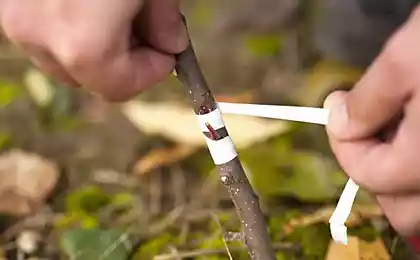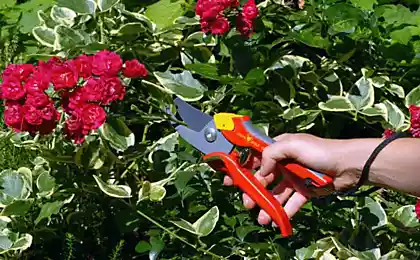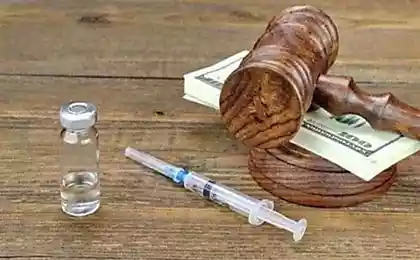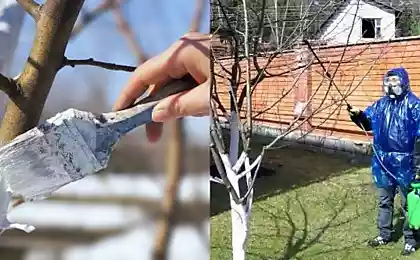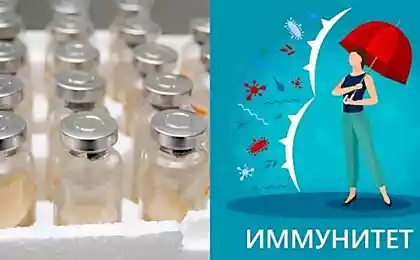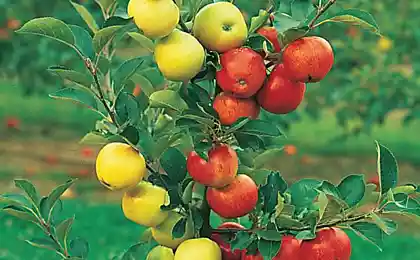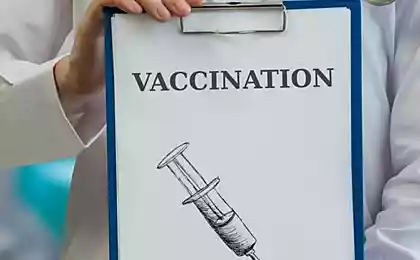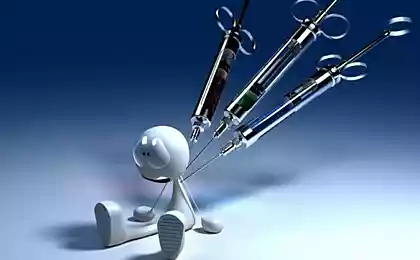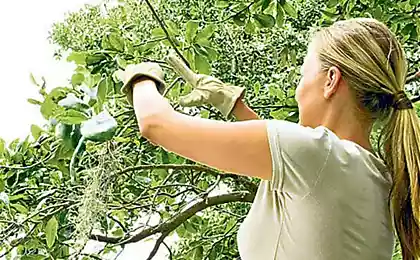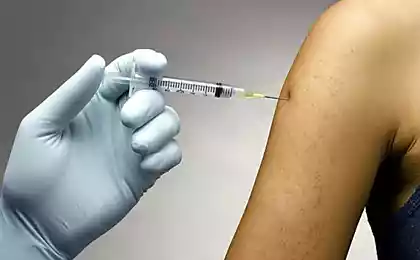634
The easiest method of grafting trees
Grafting trees
Topolyovka is the most popular and convenient option for thin rootstocks. A thin rootstocks is something we often have the case: young wildings, which I want to turn into a varietal trees, berry and ornamental shrubs; grapes and young branches of the crown of fruit trees, the quality of which we want to improve.
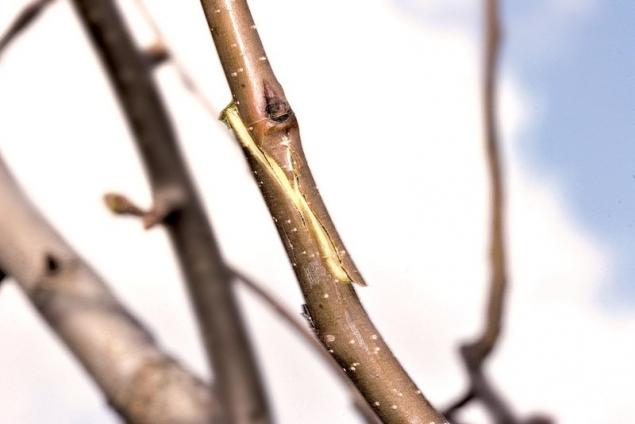
SPECIFICS OF TOPOLYOVKA
At the same time and dignity and complexity of topolyovka is that it applies only in cases where both sides of the operation — rootstock and Scion is of the same diameter. Rootstock may be 1-2 years of wilding or the same age twig of a fruit tree with a diameter less than 1.5 cm, the Scion should be chosen accordingly.
ADVANTAGES OF THE METHOD
The name of this method came from the Latin copulo, which translates to connect. Feature is absolutely accurate, because the whole point of the method is reduced to a simple connection of the rootstock and cuttings. This simplicity is a big plus. For even the novice grower is quite capable to master the technique of such vaccination and to access the breeding of new varieties in your garden. Besides, using topolyovka of young wilding, you can quickly get a fruit tree is the right kind. And the third great advantage of topolyovka include a high percentage survival rate of vaccination.
RECOMMENDED TIME
Topolyovka carried out in the spring, before buds on the rootstock. To begin operations, as soon as the temperature will allow you to work outdoors. The first grafted stone fruit species. It is known that inoculation of cherries gives very good results if done prior to the beginning sokodvizhenija.
Best time — end of March-beginning of April. Pome breed instill from early April to mid-June. The key to successful topolyovka to carry out the operation when the rootstock wakes up, and the Scion (long stalk), another is dormant. This can be achieved if the cuttings were harvested in late autumn or in late winter-early spring, when the shoots were in a state of complete rest, and until vaccinations were cold. Gardeners have successfully used two types of topolyovka — simple and enhanced.
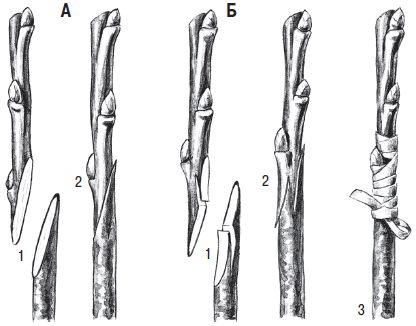
SIMPLE TOPOLYOVKA
It really is simple technology. Its essence lies in the fact that the rootstock and Scion are of equal size sections, and these sections are tightly pressed against each other to the point of contact fused.
HOW IT'S DONE
Even a cursory glance at the diagram is enough to understand the technology simple topolyovka. But there are subtleties even in the simplest procedures. Let's focus our attention to them step by step.
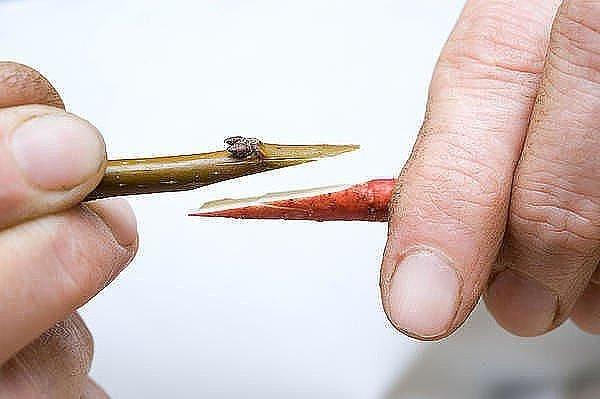
Step 1: preparation of rootstock On rootstock (trunk or branch) you need to choose a smooth, defect-free crust (and it would be good even without the kidney) place. Rootstock wipe clean with a damp cloth. It is no small thing — remember how easily an infection in the open wound, and we're just doing a wound. Acute (for kopulirovka) with a knife make slanting clean cut at an acute angle (about 20-25°). This is to ensure that the area of contact between the Scion and rootstock was big enough, so the length of the cut must be approximately 3-5 times greater than the diameter of the rootstock — 2.5-4 cm (depending on the thickness of the stock). The slicer need to do a single move (on itself). Here without training can not do, the good she can do any vacationer.
Step 2: prepare the Scion In the stalk to do the same along the length of the slice as on the rootstock. For this you first need to choose on the handle those 2-3-4 buds, who will "go to the vaccine". Begin the cut 1 cm below the first lower buds and make it the same angle as the rootstock... Then on the third kidney (or second or fourth according to your idea) at a distance of about 2 mm stalk should be cut at an angle of 45° to the kidney (in the figure it is seen that the cut goes towards the kidneys and just above it). If you procedure slice is already running steadily, convenient to first choose on the handle 3 well-developed buds to cut above the top Bud, and the work slice to do after that.
Step 3: connecting the Scion and rootstock to Attach the Scion to Bodvou cut to get a single escape. If the cuts are made correctly, that their surface is almost completely the same, and cambial layers of the Scion and rootstock tightly pressed against each other. And this is one of the most important conditions for proper fusion.
Step 4: fixing the site of inoculation by a Narrow strip of plastic film (5-10 mm) or a special elastic band is tight you need to wrap the site of inoculation, tightly clutching slices of the rootstock and Scion to one another. Each coil of tape do overlap. Here is a "thin place" vaccinations: during the taping, it is important not to dislodge the strips of contact of the cambium. The question often arises: whether to wrap the kidney, which is located just in the area of the winding? Gardeners do both. For me the decisive factor was the fact that in the old Soviet publications on gardening consults a kidney to keep open))
Step 5: protection vaccination is the Upper cut of the cutting must necessarily obscure garden pitch below the top Bud was not dried out. Some gardeners for the first time put on the vaccination site clean plastic or paper bag or a special cap to reduce evaporation. There is one caveat that should be borne in mind: the upper cut of the cutting to be damp, so a layer of garden Vara can just slip (move) until you spend of manipulation. This little thing can play a fatal role: top, and sometimes even following her kidney may not germinate due to desiccation. So better to be safe and to check once more. It now remains to wait for the result. If done correctly, after 2 weeks, the buds should start to rise.
As you can see, the method is simple topolyovka really simple. But he has one major drawback: it is very inconvenient to hold the handle on the rootstock before and during binding to the slices did not move. Perhaps that is why there is a need for improved topolyovka.
IMPROVED TOPOLYOVKA
This method differs from the simple topolyovka the fact that oblique cuts of the Scion and rootstock make resepi-tabs, which form a kind of clasp, allowing the Scion firmly on the rootstock.
HOW IT'S DONE
Technology is the first two steps are absolutely the same as in the simple topolyovka.
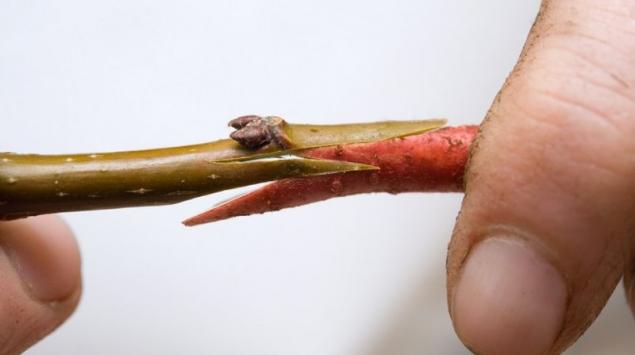
Step 1: preparing the rootstock Rootstock wipe clean with a damp cloth and a scythe to make a clean cut at an acute angle.
Step 2: preparation of the Scion On the handle to make the same length cut as on the rootstock.
Step 3: cutting the reeds Cut rootstock mentally divide into 3 equal parts and taking one-third from the top, to make the knife a longitudinal incision along the axis of the escape depth of about 10-12 mm. to do the same on the cut of the Scion.
Step 4: connecting the Scion and rootstock to Get the graft to Bodvou the latch tongue so that they tightly held each other's tongue lock. If the diameters of the rootstock and the stem is slightly different, the reeds provide an opportunity to move the Scion with rootstock with at least one side of the cambial layers match.
Step 5: fixing the site of inoculation in the same way as in the simple topolyovka, plastic or a special elastic band is tight you need to wrap the site of inoculation, tightly clutching slices of the rootstock and Scion to one another. Each coil of tape also do with overlap.
Step 6: protection vaccination is the Upper cut of the cutting obscure garden pitch or clay. Put on a fixed area with clean plastic bag, tying vaccinations below.
Comparing the ways a simple and improved topolyovka, inevitably come to the conclusion that two simple incision substantially facilitate the procedure. Besides, these flat tabs greatly increase the area of contact between the Scion and rootstock. So — and the chances of success more. Well, we met with two methods of grafting fruit trees. Possible to begin to develop practical skills. And to begin with the preparation of tools and materials.published
P. S. And remember, just changing your mind — together we change the world! ©
Source: //vk.com/feed?w=wall-94669436_132988
Topolyovka is the most popular and convenient option for thin rootstocks. A thin rootstocks is something we often have the case: young wildings, which I want to turn into a varietal trees, berry and ornamental shrubs; grapes and young branches of the crown of fruit trees, the quality of which we want to improve.

SPECIFICS OF TOPOLYOVKA
At the same time and dignity and complexity of topolyovka is that it applies only in cases where both sides of the operation — rootstock and Scion is of the same diameter. Rootstock may be 1-2 years of wilding or the same age twig of a fruit tree with a diameter less than 1.5 cm, the Scion should be chosen accordingly.
ADVANTAGES OF THE METHOD
The name of this method came from the Latin copulo, which translates to connect. Feature is absolutely accurate, because the whole point of the method is reduced to a simple connection of the rootstock and cuttings. This simplicity is a big plus. For even the novice grower is quite capable to master the technique of such vaccination and to access the breeding of new varieties in your garden. Besides, using topolyovka of young wilding, you can quickly get a fruit tree is the right kind. And the third great advantage of topolyovka include a high percentage survival rate of vaccination.
RECOMMENDED TIME
Topolyovka carried out in the spring, before buds on the rootstock. To begin operations, as soon as the temperature will allow you to work outdoors. The first grafted stone fruit species. It is known that inoculation of cherries gives very good results if done prior to the beginning sokodvizhenija.
Best time — end of March-beginning of April. Pome breed instill from early April to mid-June. The key to successful topolyovka to carry out the operation when the rootstock wakes up, and the Scion (long stalk), another is dormant. This can be achieved if the cuttings were harvested in late autumn or in late winter-early spring, when the shoots were in a state of complete rest, and until vaccinations were cold. Gardeners have successfully used two types of topolyovka — simple and enhanced.

SIMPLE TOPOLYOVKA
It really is simple technology. Its essence lies in the fact that the rootstock and Scion are of equal size sections, and these sections are tightly pressed against each other to the point of contact fused.
HOW IT'S DONE
Even a cursory glance at the diagram is enough to understand the technology simple topolyovka. But there are subtleties even in the simplest procedures. Let's focus our attention to them step by step.

Step 1: preparation of rootstock On rootstock (trunk or branch) you need to choose a smooth, defect-free crust (and it would be good even without the kidney) place. Rootstock wipe clean with a damp cloth. It is no small thing — remember how easily an infection in the open wound, and we're just doing a wound. Acute (for kopulirovka) with a knife make slanting clean cut at an acute angle (about 20-25°). This is to ensure that the area of contact between the Scion and rootstock was big enough, so the length of the cut must be approximately 3-5 times greater than the diameter of the rootstock — 2.5-4 cm (depending on the thickness of the stock). The slicer need to do a single move (on itself). Here without training can not do, the good she can do any vacationer.
Step 2: prepare the Scion In the stalk to do the same along the length of the slice as on the rootstock. For this you first need to choose on the handle those 2-3-4 buds, who will "go to the vaccine". Begin the cut 1 cm below the first lower buds and make it the same angle as the rootstock... Then on the third kidney (or second or fourth according to your idea) at a distance of about 2 mm stalk should be cut at an angle of 45° to the kidney (in the figure it is seen that the cut goes towards the kidneys and just above it). If you procedure slice is already running steadily, convenient to first choose on the handle 3 well-developed buds to cut above the top Bud, and the work slice to do after that.
Step 3: connecting the Scion and rootstock to Attach the Scion to Bodvou cut to get a single escape. If the cuts are made correctly, that their surface is almost completely the same, and cambial layers of the Scion and rootstock tightly pressed against each other. And this is one of the most important conditions for proper fusion.
Step 4: fixing the site of inoculation by a Narrow strip of plastic film (5-10 mm) or a special elastic band is tight you need to wrap the site of inoculation, tightly clutching slices of the rootstock and Scion to one another. Each coil of tape do overlap. Here is a "thin place" vaccinations: during the taping, it is important not to dislodge the strips of contact of the cambium. The question often arises: whether to wrap the kidney, which is located just in the area of the winding? Gardeners do both. For me the decisive factor was the fact that in the old Soviet publications on gardening consults a kidney to keep open))
Step 5: protection vaccination is the Upper cut of the cutting must necessarily obscure garden pitch below the top Bud was not dried out. Some gardeners for the first time put on the vaccination site clean plastic or paper bag or a special cap to reduce evaporation. There is one caveat that should be borne in mind: the upper cut of the cutting to be damp, so a layer of garden Vara can just slip (move) until you spend of manipulation. This little thing can play a fatal role: top, and sometimes even following her kidney may not germinate due to desiccation. So better to be safe and to check once more. It now remains to wait for the result. If done correctly, after 2 weeks, the buds should start to rise.
As you can see, the method is simple topolyovka really simple. But he has one major drawback: it is very inconvenient to hold the handle on the rootstock before and during binding to the slices did not move. Perhaps that is why there is a need for improved topolyovka.
IMPROVED TOPOLYOVKA
This method differs from the simple topolyovka the fact that oblique cuts of the Scion and rootstock make resepi-tabs, which form a kind of clasp, allowing the Scion firmly on the rootstock.
HOW IT'S DONE
Technology is the first two steps are absolutely the same as in the simple topolyovka.

Step 1: preparing the rootstock Rootstock wipe clean with a damp cloth and a scythe to make a clean cut at an acute angle.
Step 2: preparation of the Scion On the handle to make the same length cut as on the rootstock.
Step 3: cutting the reeds Cut rootstock mentally divide into 3 equal parts and taking one-third from the top, to make the knife a longitudinal incision along the axis of the escape depth of about 10-12 mm. to do the same on the cut of the Scion.
Step 4: connecting the Scion and rootstock to Get the graft to Bodvou the latch tongue so that they tightly held each other's tongue lock. If the diameters of the rootstock and the stem is slightly different, the reeds provide an opportunity to move the Scion with rootstock with at least one side of the cambial layers match.
Step 5: fixing the site of inoculation in the same way as in the simple topolyovka, plastic or a special elastic band is tight you need to wrap the site of inoculation, tightly clutching slices of the rootstock and Scion to one another. Each coil of tape also do with overlap.
Step 6: protection vaccination is the Upper cut of the cutting obscure garden pitch or clay. Put on a fixed area with clean plastic bag, tying vaccinations below.
Comparing the ways a simple and improved topolyovka, inevitably come to the conclusion that two simple incision substantially facilitate the procedure. Besides, these flat tabs greatly increase the area of contact between the Scion and rootstock. So — and the chances of success more. Well, we met with two methods of grafting fruit trees. Possible to begin to develop practical skills. And to begin with the preparation of tools and materials.published
P. S. And remember, just changing your mind — together we change the world! ©
Source: //vk.com/feed?w=wall-94669436_132988

